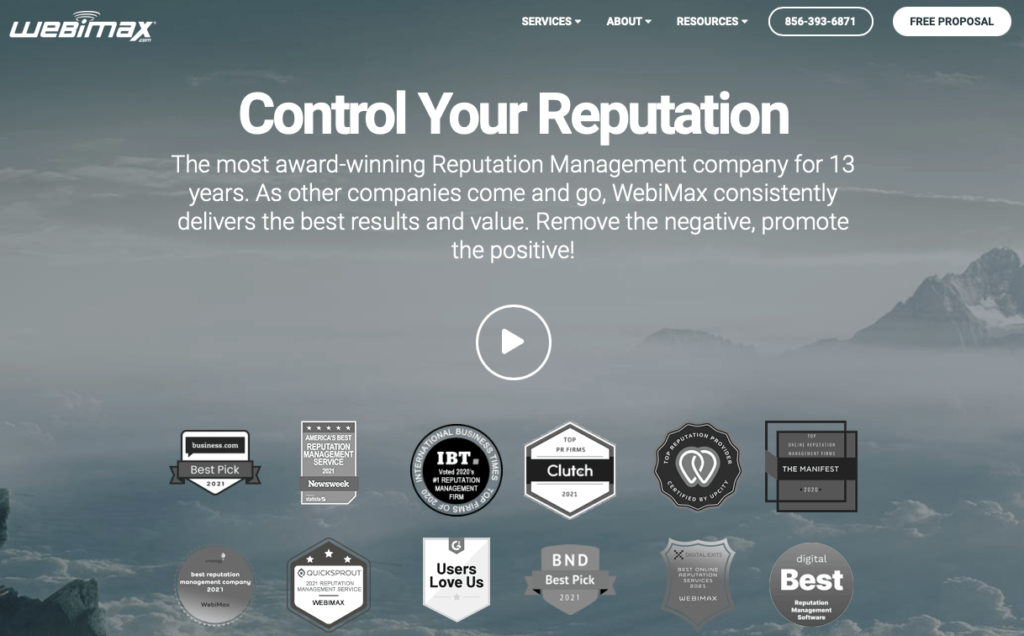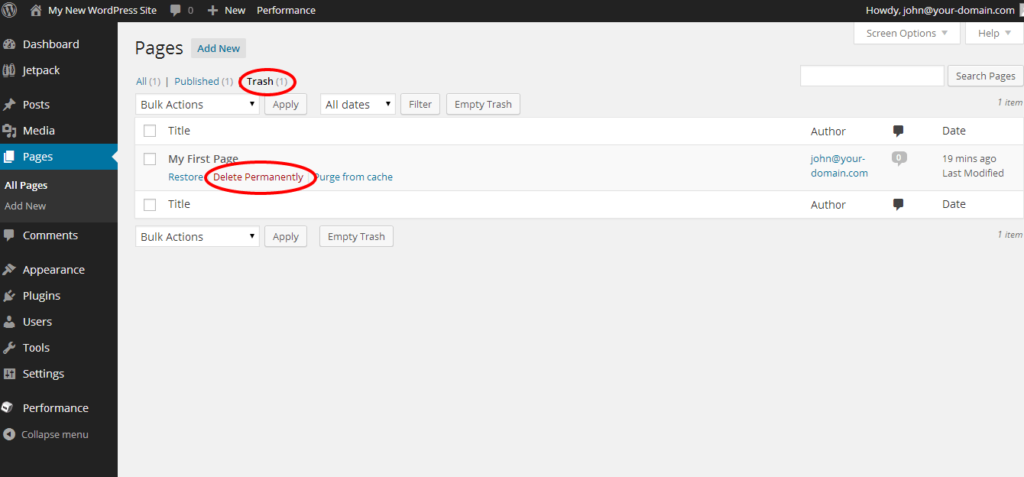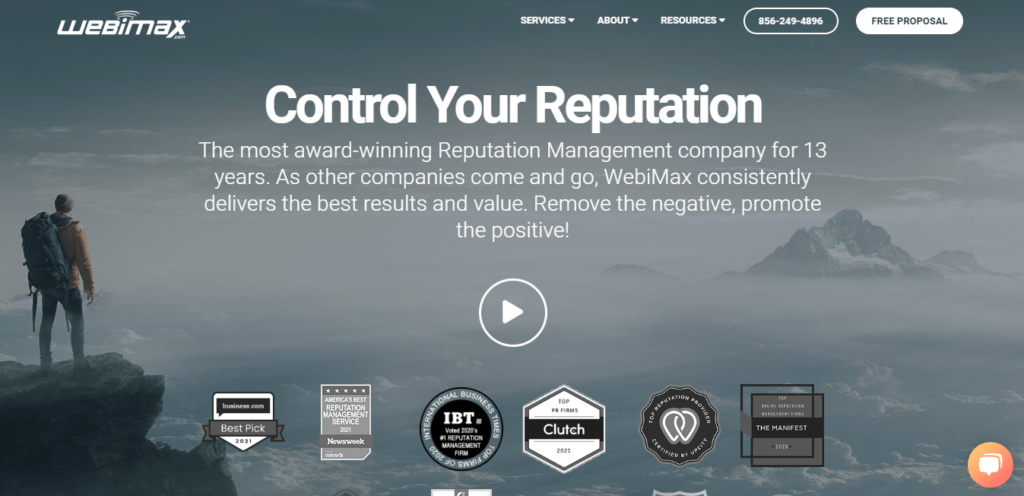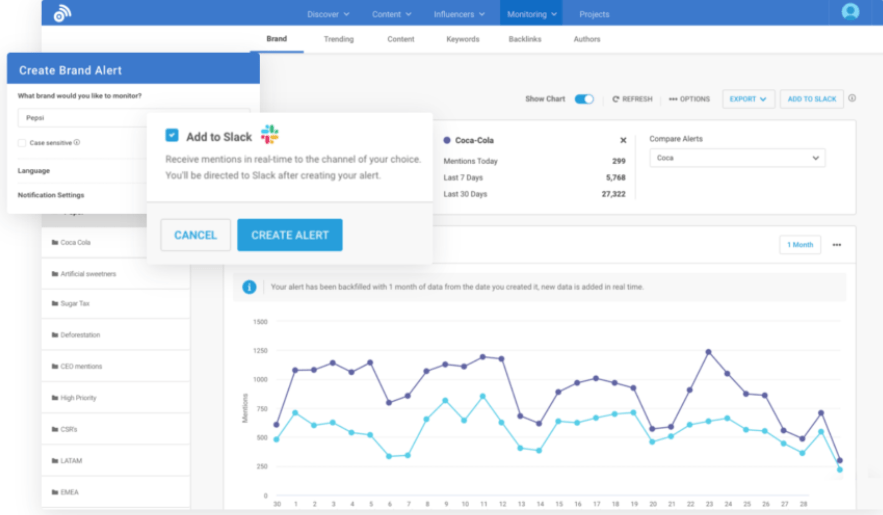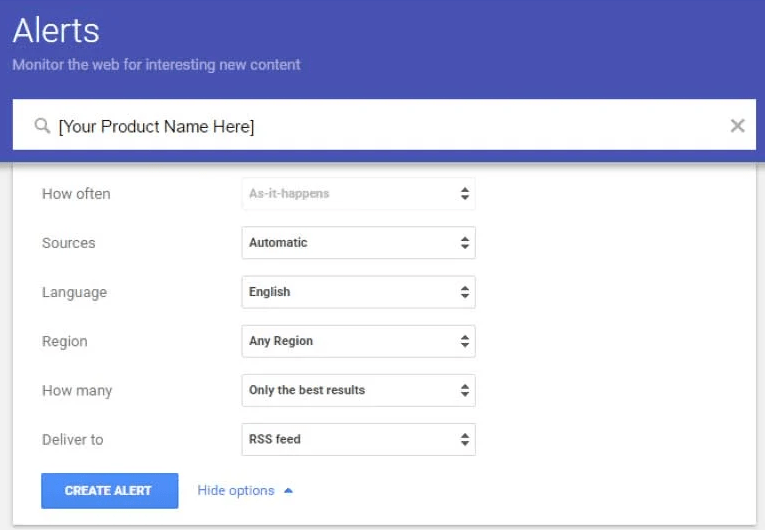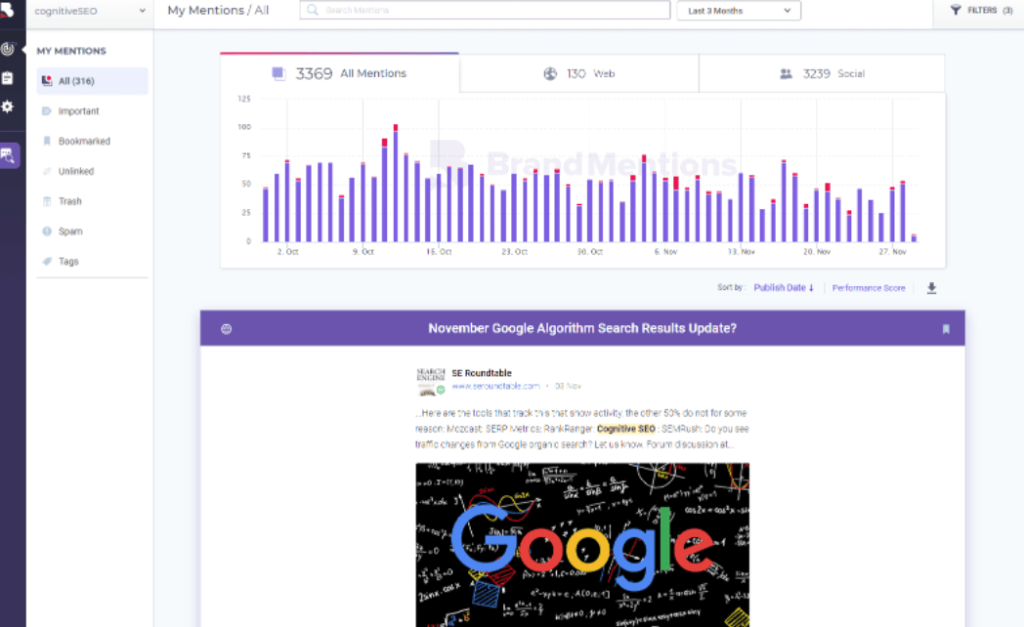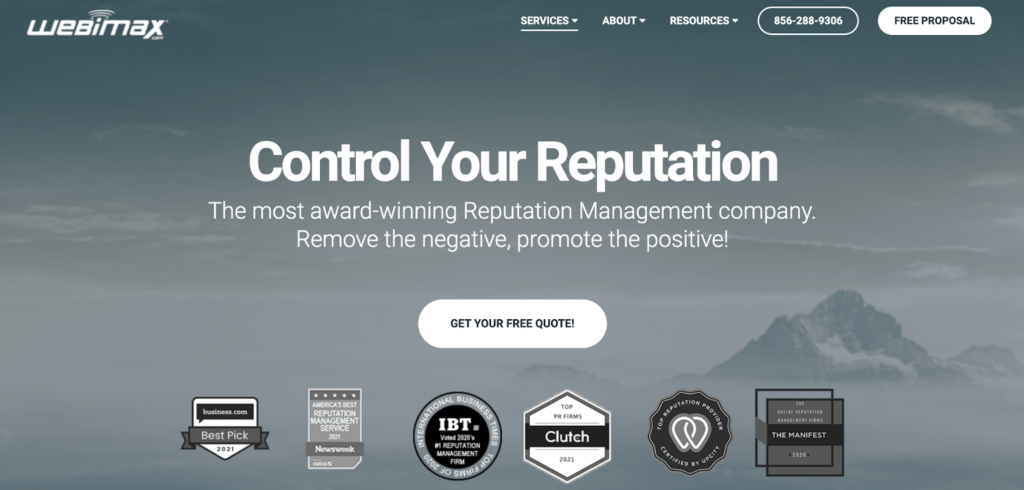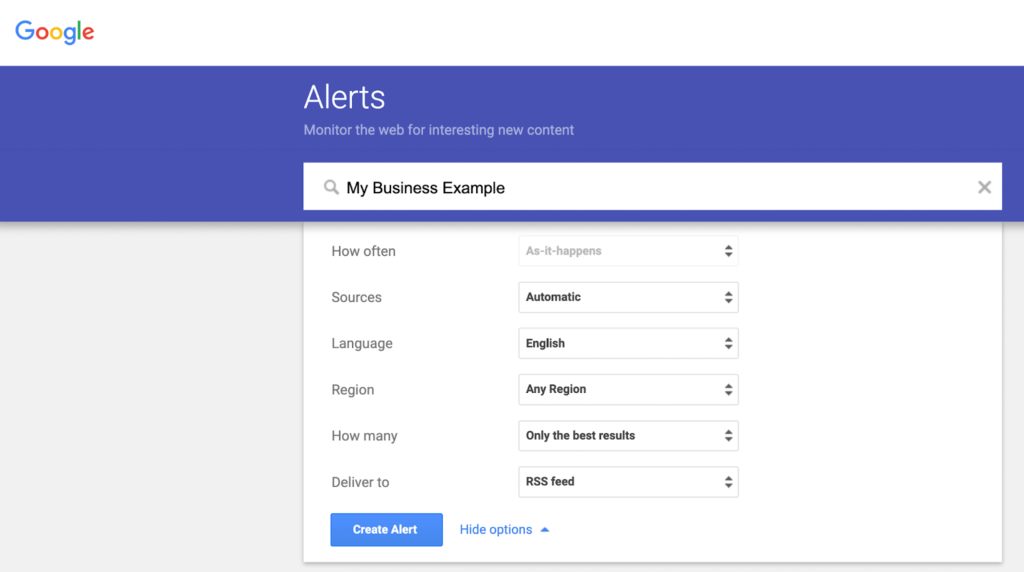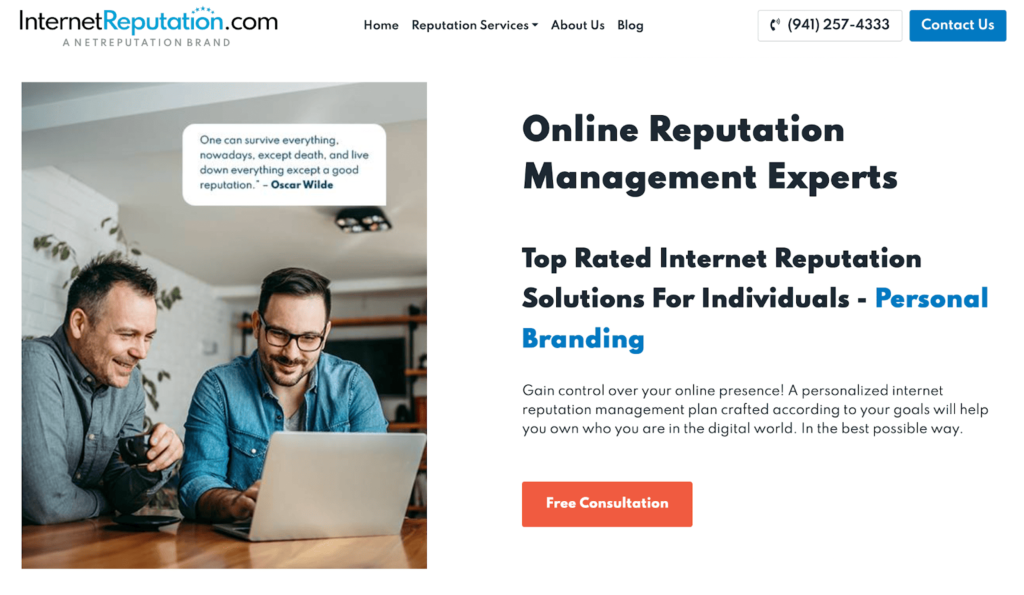Want to just get started? Click here to sign up for WebiMax and start getting reviews today.
Online reviews can make or break a business. But most people won’t go out of their way to leave a review—you need to ask them.
Learning the right way to ask customers for reviews will help drown out negative reviews, improve your reputation, and generate more revenue for your business.
Before you know it, you’ll have hundreds, if not thousands, of online reviews for your business across multiple review websites and platforms.
The Top Online Reputation Management Companies to Help You Get More Reviews
Asking for reviews and getting more reviews is easier with some help. These reputation management specialists can streamline this process and help you get reviews quicker:
- WebiMax — Best overall
- NetReputation – Best for ultra-responsive customer support
- InternetReputation.com – Best for personal reputation management
- Reputation Defense Network — Best for permanently removing false content
- Podium — Best for getting reviews automatically
- SEO Image — Best for legal and medical practices
- Gadook — Best for rebranding after reputation attacks
- BirdEye — Best for getting Google and Facebook reviews
- Reputation.com — Best for knowing your competition’s reputation
- Go Fish Digital — Best for improving Yelp reviews
- Netmark.com — Best for hands-off, fast responses to reputation hits
You can read the full reviews of each online reputation management company here.
5 Steps to Ask For a Review
Asking for customers to leave you a review is much easier if you have a playbook to follow. The entire process can be summarized in just five simple steps:
- Establish Your Presence on Review Sites
- Set Up Automated Review Requests
- Give Your Customers a Reason to Leave a Review
- Monitor and Respond to Customer Reviews
- Showcase and Promote Your Best Reviews
The Easy Parts of Asking For a Review
Lots of business owners don’t know when to ask for a review. They think the opportunities are scarce. But this is a common misconception.
There are actually tons of opportunities to ask customers for reviews on a daily basis. The easiest time to ask is immediately following the sale.
Following a purchase, you can set up automated prompts for reviews through emails, text messages, thank you pages, and other landing pages. This is when it’s helpful to partner with an online reputation management company, as they’ll have the technology you need to automate this process.
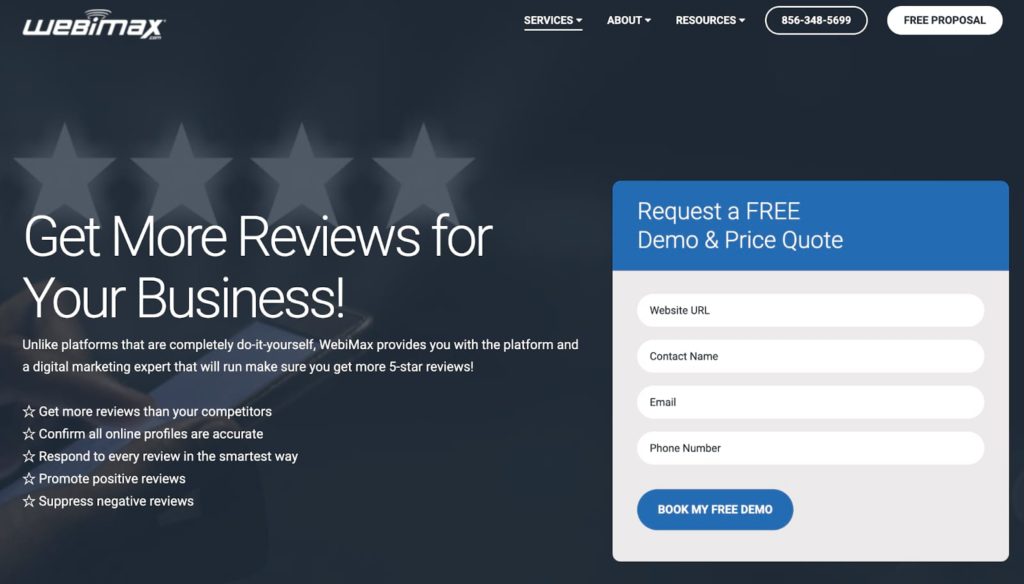
WebiMax is an excellent option. In addition to automating online review prompts, WebiMax can also help you ask for customer reviews in person.
They’ll generate a QR code that you can put on print media or point-of-sale stations to make it easy on your customers when you’re asking them for a review.
As a full-service reputation management company, WebiMax can also help suppress negative reviews, remove negative reviews, promote positive reviews, and get more reviews than your competition.
The Difficult Parts of Asking for a Review
The hardest part about asking for reviews is that you can’t control what people say.
Some customers will have a bad experience with your business. If you’re asking those people to leave a review, don’t be surprised if they share candid feedback.
Many business owners struggle with negative reviews because they take things personally. The sooner you start looking at negative reviews as a chance to get better and improve your business, the easier it will be moving forward.
There will always be a handful of customers that can’t be pleased, no matter how hard you try. But those scenarios are generally anomalies and shouldn’t be something for you to worry about.
Having patience is another challenge for some business owners, especially if you currently have low star ratings and lots of negative reviews across multiple platforms. You can’t jump from a 3-star rating to a 5-star rating overnight. It’s going to take some time for you to see an improvement.
But once you start asking for reviews and the volume of online reviews increases, you should start to see the positive reviews outweigh the negative ones.
Knowing When to Stop Asking for a Review
The other difficult part of asking customers for a review is knowing how frequently to ask and when to stop asking. If the customer does not respond to your request for a review the first time, you may want to generate a few automated emails or text messages to ask again. This sometimes will work, as some customers simply may be too busy or may forget to leave a review immediately after the purchase. They may respond positively to the reminder.
However, if you generate too many reminders, the customer may feel frustrated with the pressure to leave a review. This could lead to a negative review, simply out of spite.
When you hire an online reputation management company to represent you, this company can help you find the sweet spot in the number of times to request reviews from a customer who is procrastinating.
Step 1 – Establish Your Presence on Review Sites
Before you can ask customers to leave you a review, you need to guide them in the right direction. “Can you please leave us a review?” without any link or direction isn’t going to get the job done.
For digital requests, you’ll want a direct link to one or more specific review sites. Even if you’re asking in person, you should direct the customer to a specific site.
Claim Any Unclaimed Profiles
Make sure you set up a business profile on all of the most popular review sites related to your brand and industry. Prioritize the ones that already have existing reviews.
Here are some examples of sites where customers leave reviews online:
- Yelp
- Yellowpages
- Trustpilot
- Foursquare
- ConsumerReports
Depending on your business, there might be some other platforms to consider. For example, Amazon sellers would obviously want to direct customers to leave a review on Amazon. B2B software companies would want to establish a presence on sites like G2.
If you’re unsure which profiles need to be claimed, WebiMax can help you out. This is part of their free reputation analysis service.
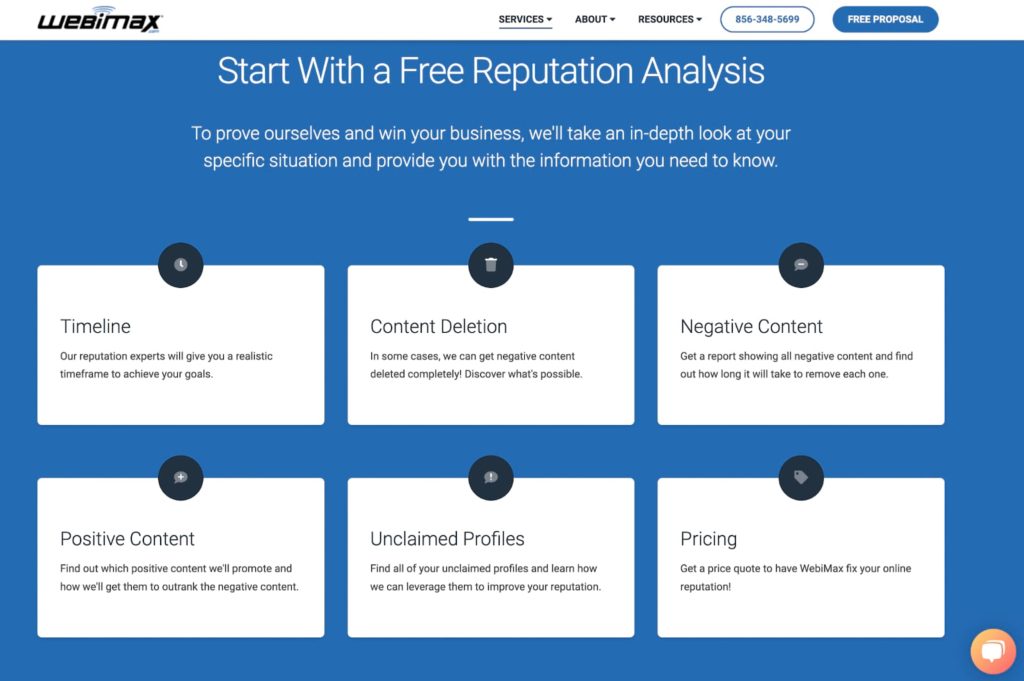
If you’re on the fence about working with a reputation management company or handling this on your own, it can’t hurt to start with the free analysis. Then you can make a decision from there.
Make Sure All Your Information is Accurate
Once you’ve claimed your business profiles, you need to go through and verify all of your information. The format of everything will obviously vary from platform to platform, but here’s a quick checklist of the information you should have on every profile:
- Business name
- Physical address
- Mailing address
- Phone number
- Email address
- Website
- Links to social media platforms
- Hours of operation
- Menu (if applicable)
- Services (if applicable)
You should also use this opportunity to add professional photos to your profile. This is your chance to show off your products, food, customers, employees, services, and anything else that you’d like to highlight when potential customers land on this site to check you out.
Step 2 – Set Up Automated Review Requests
Now that you have all of your profiles claimed, you can send customers to these sites with an automated review request. Depending on how you’re interacting with customers, you’ll have different options to consider.
Requests via Email
Any post-purchase email, including confirmation numbers, receipts, and shipping updates can contain a section that asks for a review. Alternatively, you can set up automated campaigns specifically designed around reviews, where the request is the entire purpose of the message.
Experiment with both of these options. But timing is really important to consider here.
For example, if you’re running an ecommerce website, asking customers to review your product in an order confirmation email may not be so effective—they haven’t received the product yet. You’d be better off waiting until the product has been delivered for at least a week.
But a restaurant would have better luck asking for a review immediately following the meal. If you wait a week in this scenario, the customer might not even remember what they ordered.
Mobile Requests
You can also set up automated review requests via text message. This would obviously require the customer’s permission, but it works well in scenarios where you’re communicating with them over the phone.
For example, when you’re offering phone support to a customer, you can end the conversation by asking if you can send them a review request via SMS messaging directly to their phone.

If you have a mobile app, you can prompt customers to leave you reviews with push notifications or in-app messages.
Requests in Person
Technically, asking someone for a review in person isn’t automated. But you can look at it as just another step in the checkout flow, just like telling the customer the total amount due or asking them to swipe a card.
The cool part about using WebiMax to help you with request automation is that they can also generate QR codes for you.
This is perfect for in-person requests, where the customer can pull up a review site in seconds from a QR code, as opposed to having to find it on their own.
Having a company like WebiMax automate your review request process with the right technology will drastically increase the chances of your customers completing your request.
Step 3 – Give Your Customers a Reason to Leave a Review
Why should your customers leave you a review? This is not a hypothetical question.
Giving some type of reason or incentive can go a long way. So make sure to include your reasoning in the request, whether that’s in person or digitally.
Make it clear you’re not just soliciting positive reviews—you want honest feedback. Explain the benefits of getting reviews for your business. Be honest and explain you’re trying to reach new customers. Let them know you value their opinion. Share that you always want the customer to have a positive experience and that you’re trying to get better.
Stick with one or two reasons, and move on. You can experiment with different reasons to see if some propositions work better than others.
Just always make sure you’re asking nicely, and make it as easy as possible on whoever you’re asking. Saying please, thanking them in advance, and providing them a direct link to the review site will definitely increase your chances of success. You can also offer a small incentive, like a discount on a future purchase.
Step 4 – Monitor and Respond to Customer Reviews
Your job isn’t over once the request has been made. Now you need to see if customers are actually leaving reviews.
Then you can see what kind of feedback you’re getting and respond appropriately.
Set Up Alerts
Time is of the essence when you’re monitoring reviews.
Replying a week later isn’t as effective as responding immediately. This not only shows your customers that you care about their feedback, but it also gives you a chance to get ahead of potentially negative reviews.
Many review sites give users the option to filter reviews by date. So the most recent ones will appear first.
In the event that someone has a bad experience, a prompt reply from the business owner can make prospects feel better about the situation. Apologizing, owning your mistake, and offering a resolution can save your relationship with a disgruntled customer and show new customers how seriously you take feedback.
That’s why it’s so important to set up alerts so you can promptly respond.
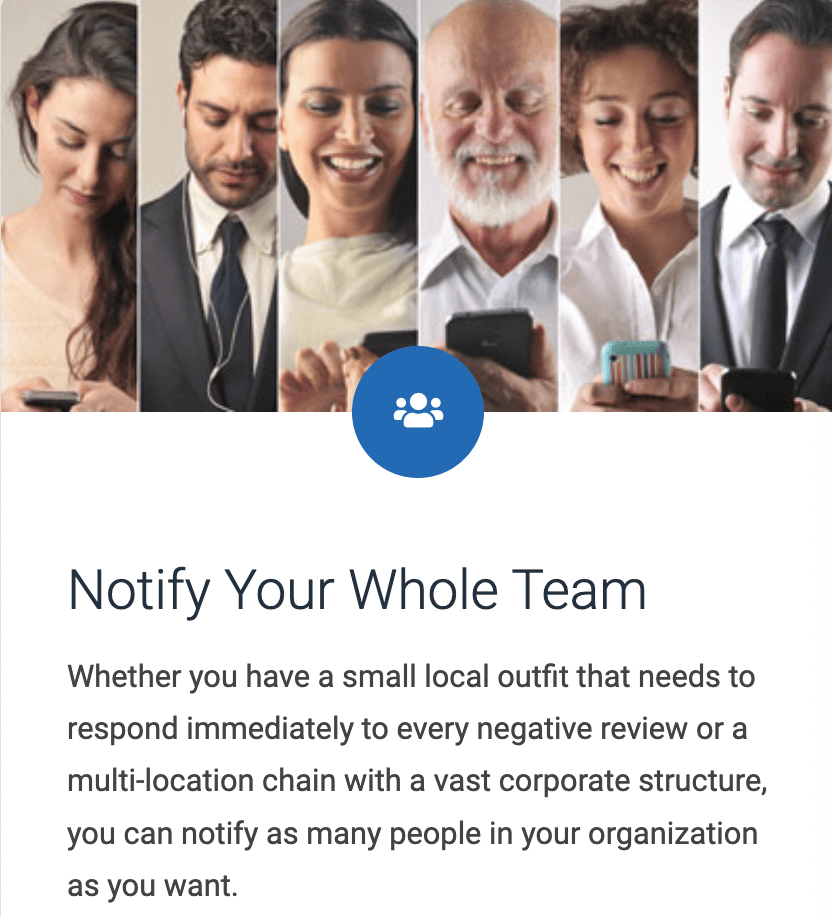
WebiMax makes this process really easy, as you can have alerts go to a single person or to your entire team.
For larger organizations with multiple locations and different managers, having an alert system that goes to the right people will make everyone’s job much easier.
This also ensures that the customer is contacted by the appropriate person during the reply. A reply from a restaurant manager is more impactful than a reply from the corporate office of a franchise.
Use a Review Dashboard
Google, Yelp, and all major review sites let you set up alerts through the individual platform. But getting bombarded with emails is tough to manage at scale, and there’s a good chance some reviews will slip through the cracks.
WebiMax has a review collection dashboard that lets you see all of your reviews from every site within a single source of truth.

This might not be important if you’re only getting one or two reviews each week on a single site. But once you start getting dozens of daily reviews across multiple review sites, you’re definitely going to want everything in a consolidated dashboard.
Step 5 – Showcase and Promote Your Best Reviews
Now it’s time to pick out your best reviews and show them to the world. Here’s why this is important.
Some customers are loyal to specific review sites. So if a customer only checks Yelp, then they’ll never see your best reviews on Google.
Here, the idea is to showcase the best reviews on your website and social channels to broaden the reach and expose them to the widest possible audience.
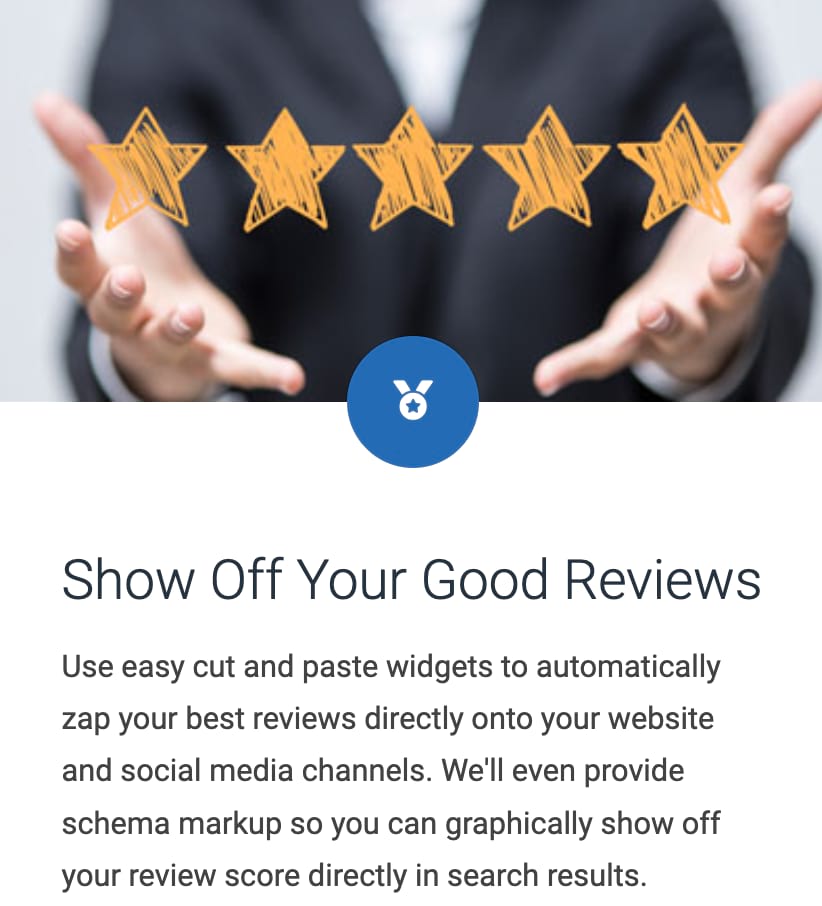
WebiMax has simple widgets that even non-technical owners can use to share reviews on social media and their websites.
You can even use schema markup generated by WebiMax for SEO purposes, so your reviews have a chance of appearing within the search results.
Customer Testimonials and Case Studies
Some businesses can take reviews a step further by showcasing customer testimonials and reviews on their website. This works really well for service-based businesses and B2B organizations.
Maybe you run a personal training business. While a customer review is great, a testimonial that includes before and after photos will really prove what you can accomplish.
B2Bs might put together case studies about how much money they helped a business save, how their efforts generated a positive ROI, or how they were able to improve internal efficiencies.
These types of initiatives will take a lot more work than asking for a review. But sourcing your existing reviews for potential candidates is a simple first step. Then you can contact those people privately and see if they’re interested in a testimonial or case study.
If you find some customers who have interest in helping you with a customer testimonial, you may want to hire a professional writer, photographer, or video company to package the testimonial. You certainly don’t want the testimonial to seem forced or fake, but you do want it to appear professional and believable, and hiring pros may help you accomplish this.
To entice customers to agree to provide a testimonial, you may want to promise to add a link to the customer’s website as part of the testimonial. If the testimonial looks great on your site, the customer may even want to include a copy of the testimonial on its site.
You do not want to offer a customer free products or a discounted bill in exchange for a positive customer testimonial, however. Someone may choose to reveal this information on the internet in a way to sabotage your company, making it appear as though you are bribing customers to leave positive reviews and customer testimonials.
from Quick Sprout https://ift.tt/tnLDTZv
via IFTTT
